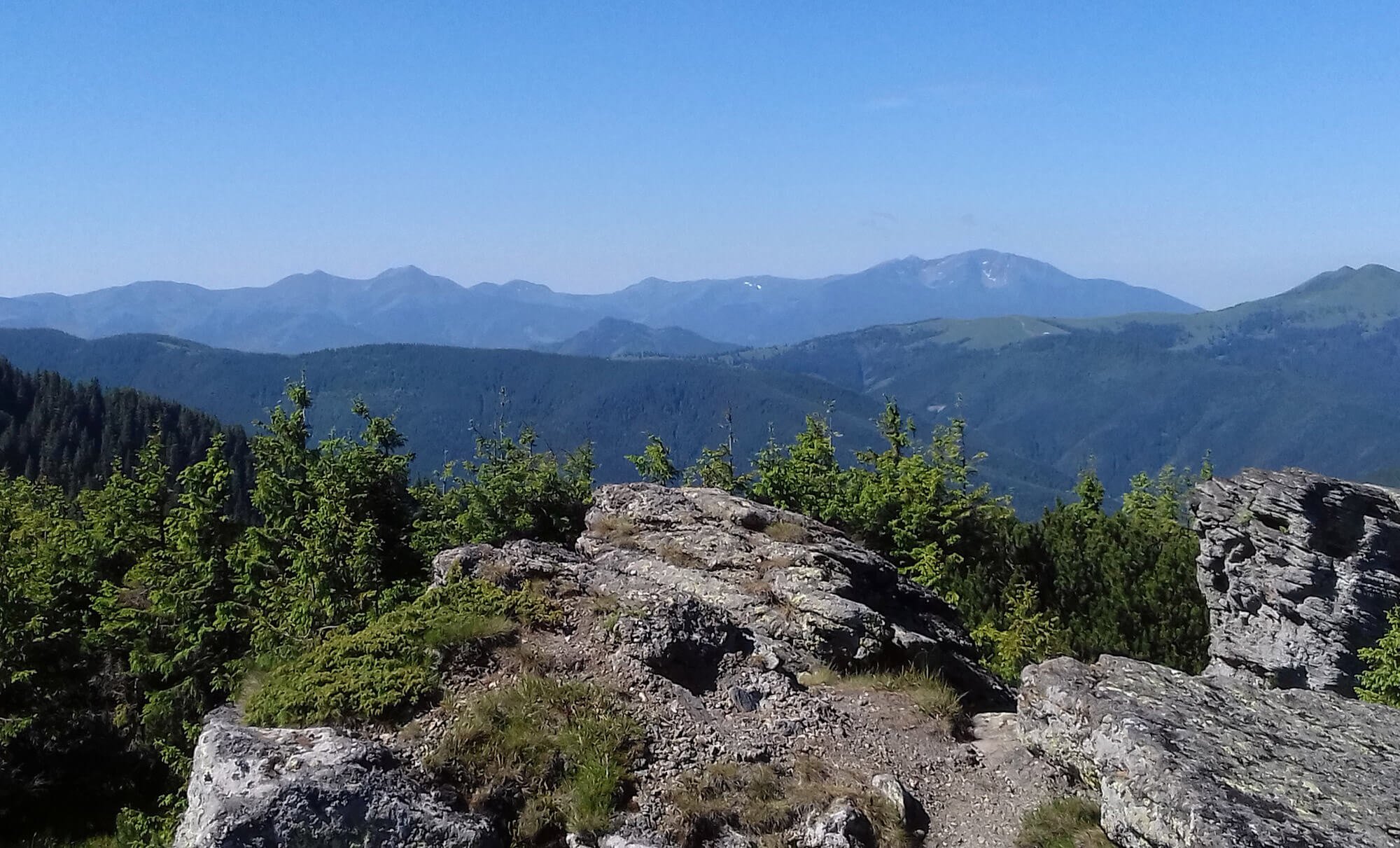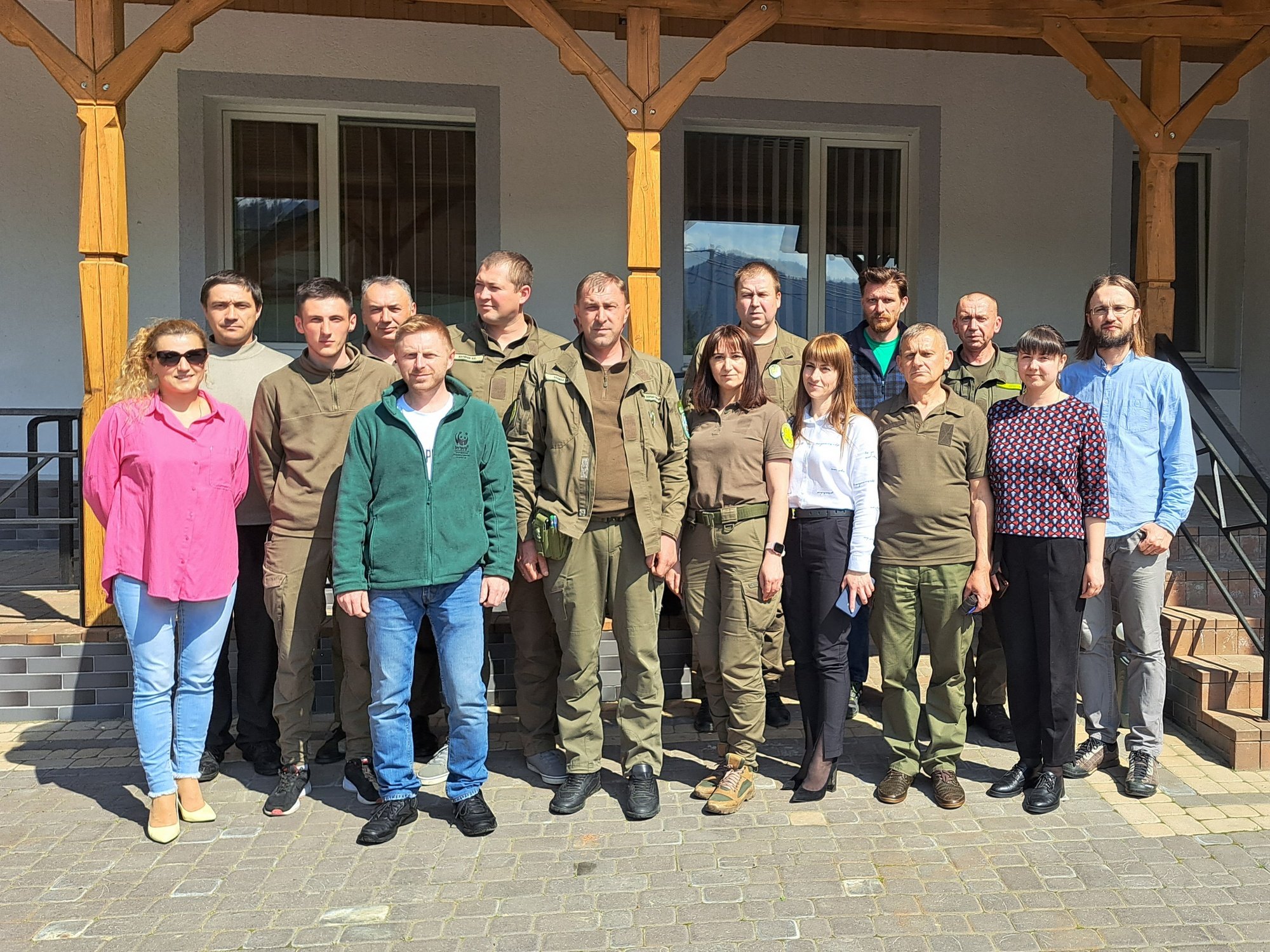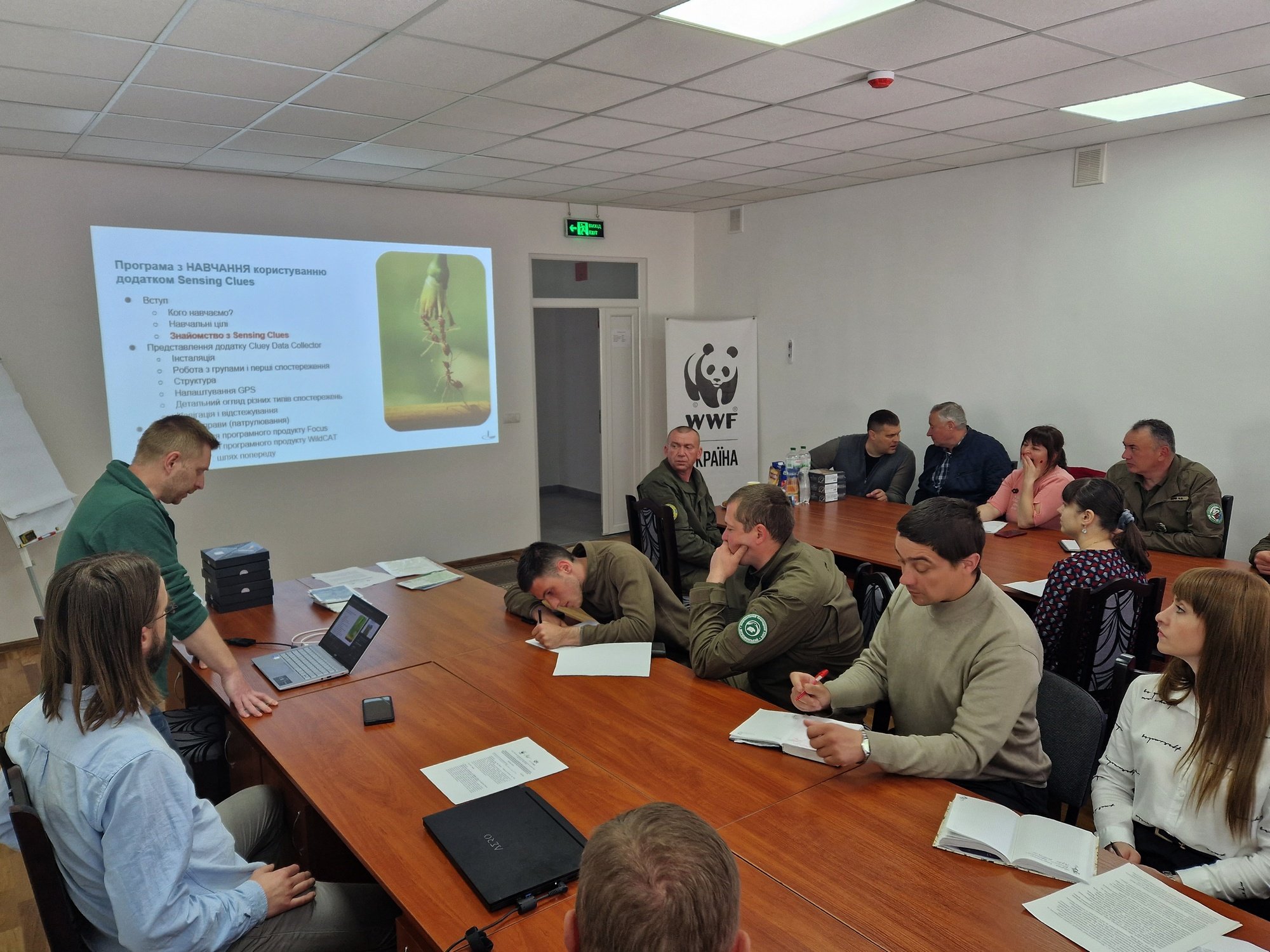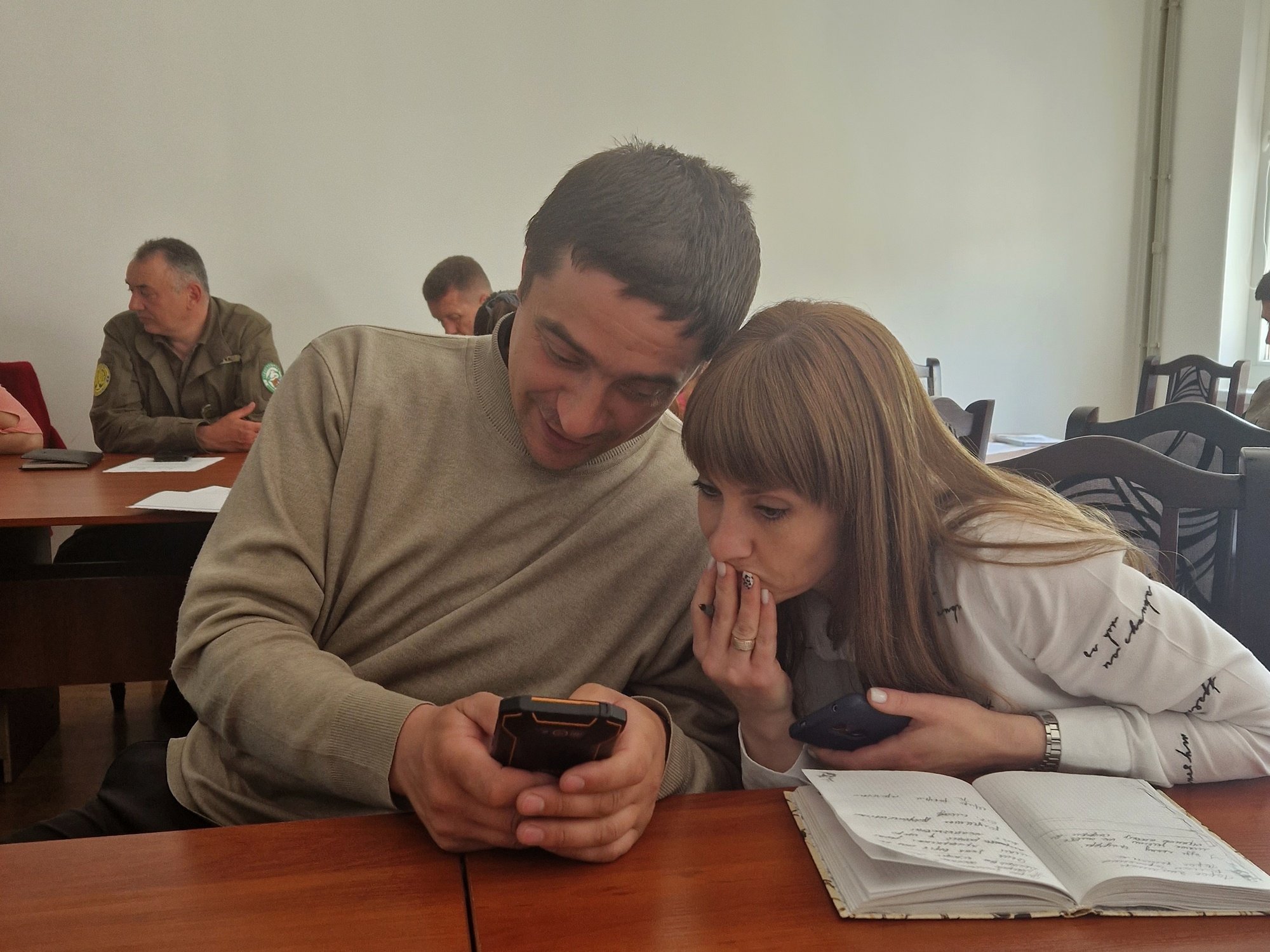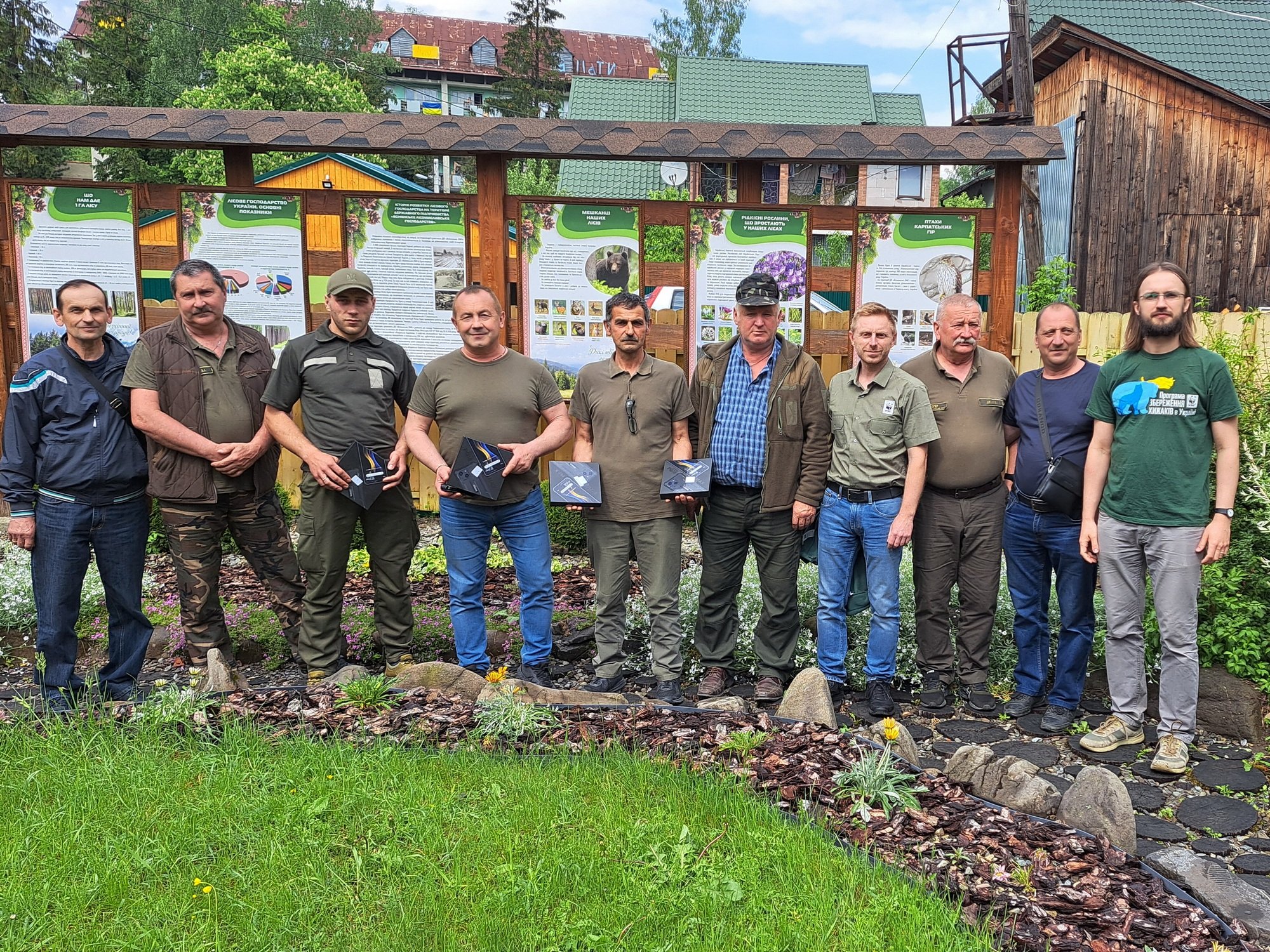3. Tusnad Eco Bear Conference in Romania
nature first team united
Last week, Jan-Kees, Melanie, Menno, and Rebekka gathered at the 3rd Tusnad Eco Bear Conference at Hotel O3zone in the stunning Băile Tușnad, Romania. It was an incredible experience finally meeting in person. The scenic train ride from Budapest gave us plenty of time to bond, especially over a few spirited card games. The conference was a fantastic opportunity to connect with our Nature FIRST partners and meet some intriguing new faces.
brown Bear Scratch Marks…
A standout moment was Thursday’s field trip to Lake Saint Anne and the Mohos Peat Bog, where we discovered numerous signs of brown bears. Scat, scratch marks, and chewed signage: all clear indications that bears are indeed in the area, which we dutifully documented in our Data Collection App Cluey.
brown bear scat…
As the trip progressed, we became increasingly attuned to the signs of bears, growing ever more excited about the possibility of a sighting. On the bus ride back to the hotel, we suddenly heard the call: "Brown bear!" And there it was, just off the road: a magnificent brown bear. It was a sight none of us will forget, etched forever in our hearts.
This trip to Romania was truly an adventure, and we at Sensing Clues would like to extend our heartfelt thanks to everyone involved for the superb organisation, engaging presentations, and delightful conversations. We can't wait for the next opportunity to come together!
…and finally the brown bear!










